
This post about teaching quality group piano classes was written by Melanie Bowes. Melanie is the Founder of the group piano program KeyNotes Music, focussing on collaborative group learning in the foundational stages of piano. The experience and knowledge she gained during her many years as a school music teacher, coupled with her extensive postgraduate qualifications in Music Education, has allowed Melanie to support teachers in delivering innovative and progressive group classes.
Melanie is currently working towards a PhD in group piano teaching and is researching the features which make it impactful and beneficial for children.
What do you think of when you hear “group piano”? The term itself can be interpreted in so many different ways, and one group piano class can look entirely different from the next.

Teaching group piano classes should not simply be a business decision. You, the teacher, need to believe in the benefits of group piano. You need to be convinced that you are offering the best learning setting for your early-stage pianists.
The benefits of group classes are universal and generally include the following:
- Students learn from each other through peer interaction, with opportunities for working together and listening to each other
- Students become adept at performing in front of others, since they do this every lesson
- There are more opportunities for the development of wider musicianship through games, listening tasks and creative tasks such as composition and improvisation
- Ensemble playing develops students’ sense of inner pulse, rhythmic accuracy and fluency
- Students can start learning at a younger age, where one-on-one learning can be viewed as too intensive and less age-appropriate
- Students have a lot of fun with their peers in a social setting which is unavailable to those who learn on their own
- Music is a social endeavour – ‘music-ing’ together is a meaningful and joyful experience
These benefits – and the success of learning in a group – depend on interaction between students being able to play together, learning with and from each other, and collaborating. Taking that a step further, teaching groups of students and ensuring the opportunities for collaboration and interaction are there will require careful planning.
Here are my suggestions to help you in your consideration and planning.
DOs
Seven things you should do in your group piano class:
1. DO – Teach Everyone Together: Same Learning, Same Pieces
There has been a big surge in interest in teaching piano students in groups, but some have moved towards the type of groups which are more akin to mini private lessons: a group of children in the room together, but on their own, playing with their headphones on, and getting help from the teacher as and when they need it. Everyone in their own method book.
For groups to truly work as groups should, we need our students to share and interact. They need to work as a class, learning together and playing the same piece together.
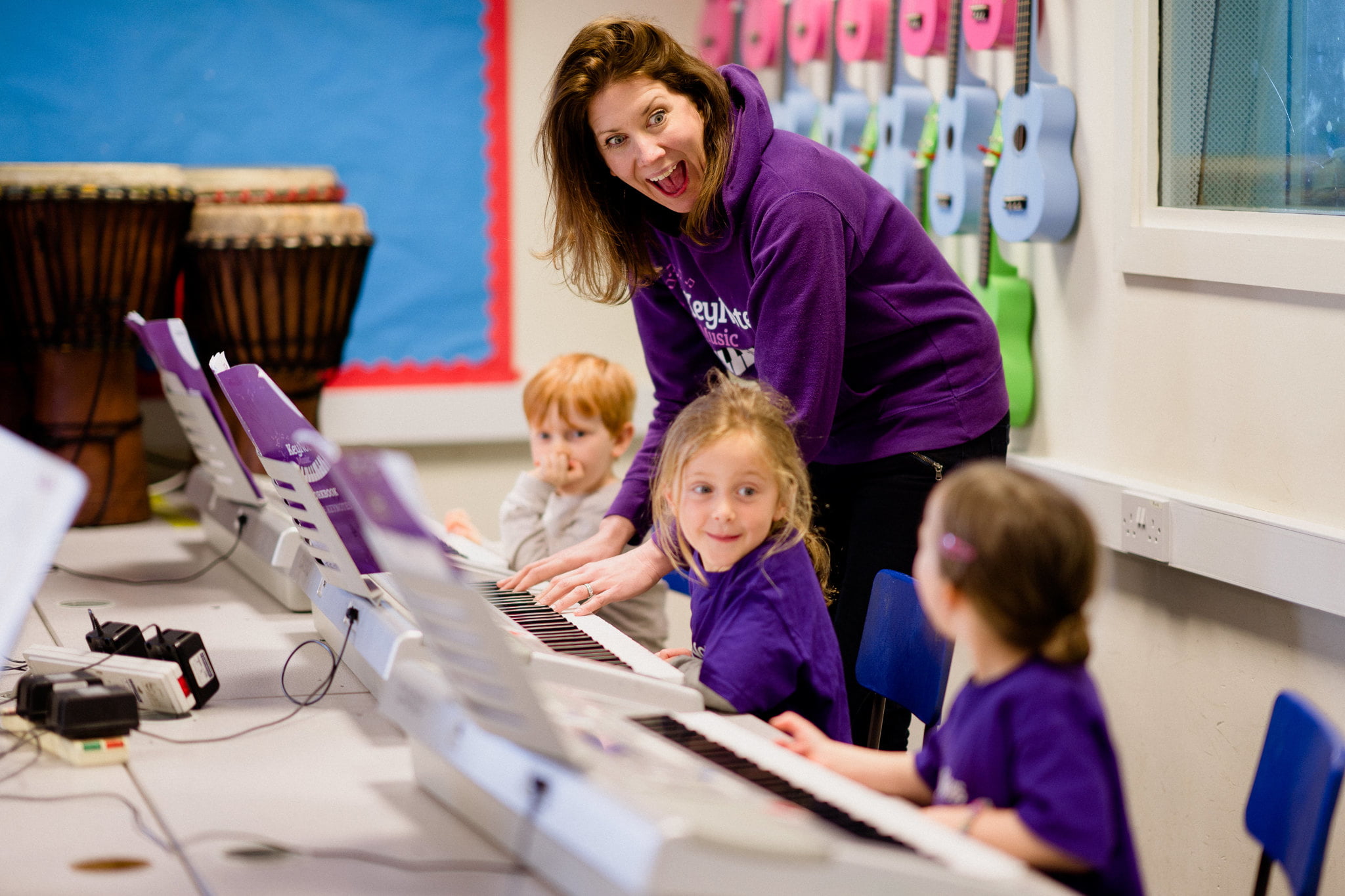
Making music together and sharing learning aims with each other are educationally important when thinking about the benefits of learning with peers. Plus it is fun and enjoyable to play games with others, to improvise together, or simply to listen to each other’s playing.
2. DO – Have a Plan for Individual Progress
Yes, we want our students to learn and play together. But the different rates of progress of individuals is probably the number 1 issue that teachers are concerned about when they consider group teaching.
As a one-on-one teacher, you must have noticed that your students move through their method books at wildly different rates. So you’re probably wondering how you can manage these different rates within a group.
Of course one option is to deliver lab-style lessons: everyone with headphones working on their own and only interacting with you – the teacher – as you work your way around them individually.
However, I would argue that this style of group learning does not reap the true benefits that it should, such as presenting opportunities for peer collaboration, learning together, motivating, inspiring each other and of course making music together.
But what about the rate of progress? Do you move at a pace which targets the average learner within your group, knowing some would move faster if they could and some may be struggling to keep up?
In my experience, this doesn’t work.
Instead, you need to allow for differentiation: different difficulty levels of the same piece and many different approaches to cater to the different learner needs and characteristics.
Multi-Level Arrangements
Take this build-it-up solo piece Sunflower Dance, for example. Students are able to learn solo repertoire together, but are still learning at their own pace.
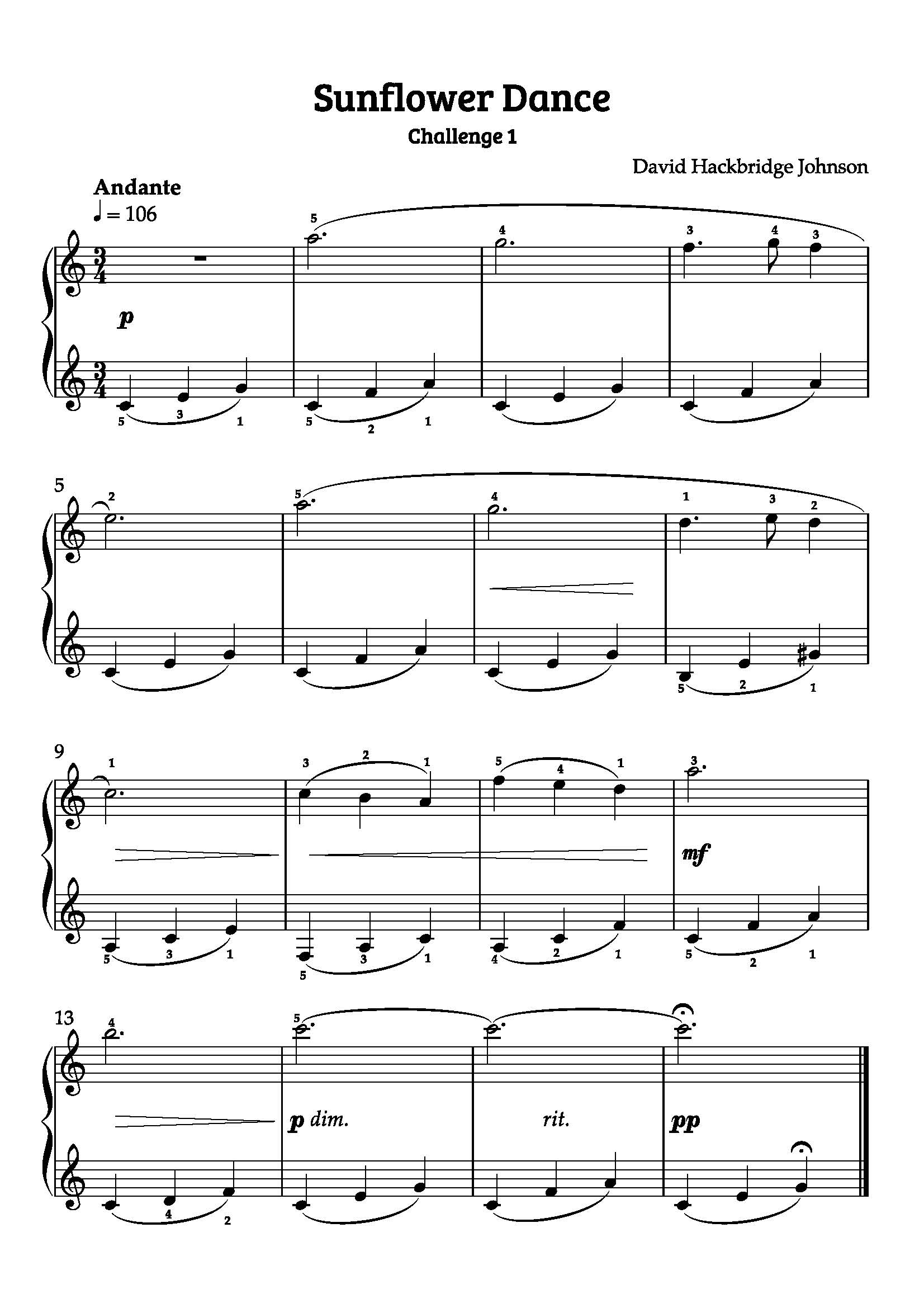
Everyone in the class starts with Challege 1, and then moves on to Challenge 2 if and when it is appropriate.
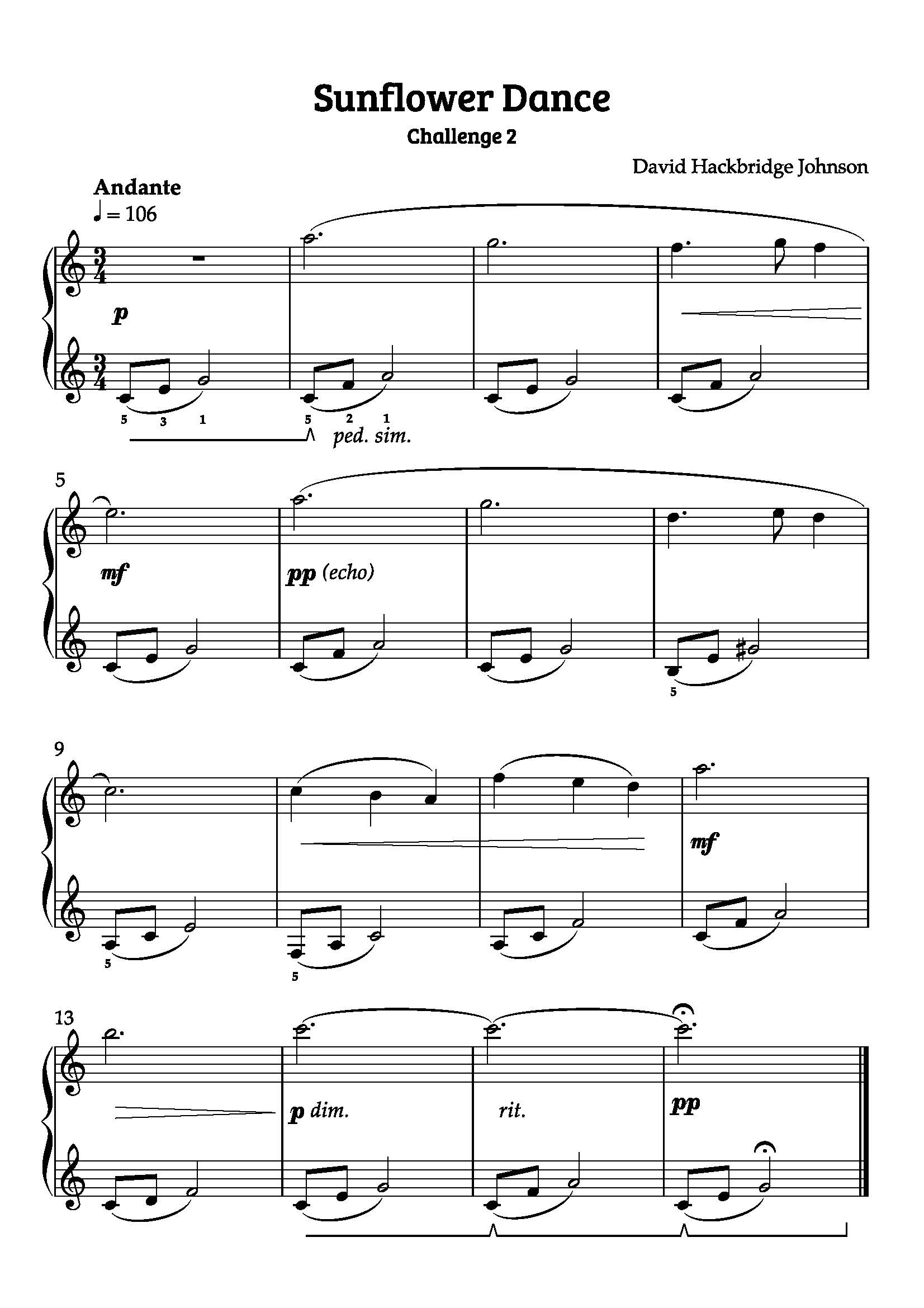
For those students who are ready to really push the boundaries, Challenge 3 gives them that opportunity.
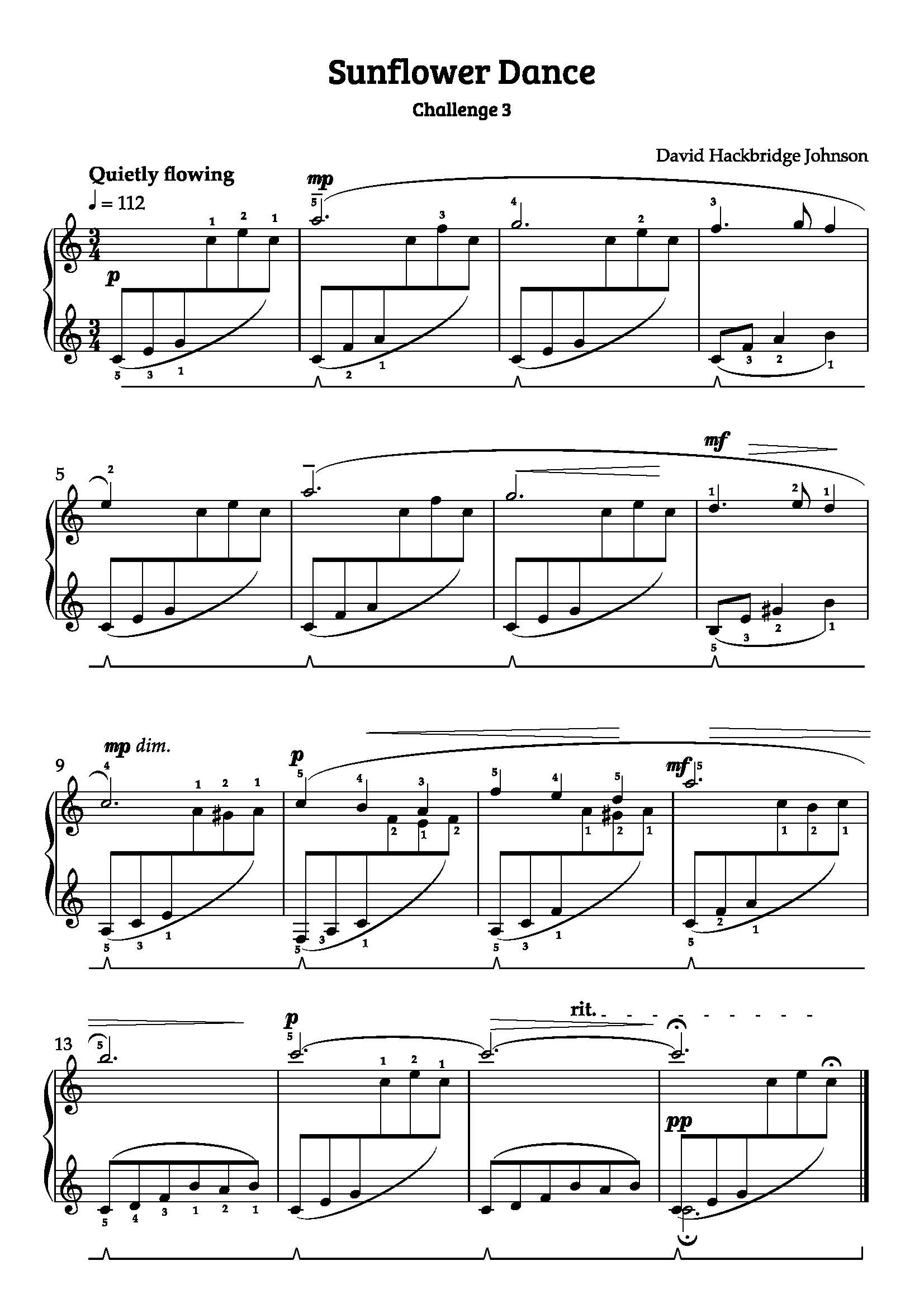
Those students who remain on Challenge 1 or 2 learn from their more advanced peers in a way they wouldn’t be able to in solo lessons.
Some composers publish these types of multi-level pieces, like the Holiday Classics multi-level solos from Piano Pronto. If you have trouble finding appropriate repertoire, you may need to create arrangements of pieces yourself.
3. DO – Have a Consistent and Clear Structure, with Learning Aims
You need to know what you want your students to learn, how they’re going to learn it and how they’ll show you they’ve learnt it.
This will inform your future planning and your monitoring of each individual’s progress. It also helps when you’re communicating your aims and student progress to parents.
A consistent structure is important for managing learner expectations, but it also means that you can ensure you have included a variety of activities to suit different learning styles.
If you need help planning your lessons, Nicola has an entire page devoted to that.
4. DO – Include Singing and Moving as Learning Tools
Singing and moving are both pursuits which support and nurture musicianship, which in turn impacts how students apply themselves musically at the piano.
And wonderfully, children in groups are more willing to use these tools without feeling self-conscious and with the understanding that they’re contributing to the learning and enjoyment.
5. DO – Nurture Independent Learning Skills
Quite aside from the fact that we need our students to be more independent in groups than we do in private lessons, we should absolutely nurture this important learner characteristic. Our students will need and use it across all of their educational settings.
The way we scaffold concepts and skills and enable students to build on their understanding will help them through a child-centred approach, but it also helps us so that we don’t have to attend to every child, every minute!
For example, let’s take keyboard geography: We go through a step-by-step thought process which involves first finding the black key patterns, then finding a landmark note (say the C) and then working by steps through the musical alphabet and up the keys.

When a student says to me, “Where is the E?”, I don’t simply point to it, nor give any external crutch. I simply say, “OK, what do we need to think about first?”, and I take them through the steps, with them finding their own way as I talk through the process. They can then use those steps again for themselves, without needing my help.
6. DO – Set Yourself Up for Mid-Year Joiners
Collaborative group piano is a truly awesome setting. But if you start a class together and then slowly students leave or move to a different class, your group can dwindle down to just a pair of students or even an individual lesson. To keep those classes full, you need to have a plan for welcoming new joiners at any point.
This is another reason why your typical piano method books are going to be difficult to deliver to a group. One-on-one method books move in a linear structure, and new students won’t be able to join this upward line unless it’s at the bottom/start!
A group of children needs to follow a cyclical curriculum structure – as they do in wider educational settings – which best befits the way that they learn.
Consolidation, review, spiralling of concepts, deepening of their understanding (and applying it with more depth each time they come across it,) steps to success and learning ladders should all be considered when teaching group piano classes.
7. DO – Support Home Practice
Just like with individual lessons, we need our group students to practise at home – and to know what to do. This is something which may not look too different from your individual lessons, but it’s aided through lesson notes to the whole group, prepared practice sheets and practice videos for each piece.
DON’Ts
Here are five things you should not do in your group piano class.
1. DON’T – Worry About Convincing Parents
This is a big concern many teachers have when thinking about starting their beginners in groups. But in reality, most parents get it. In fact, they love it.
Oftentimes, parents remember how isolated their own experience was and how they didn’t enjoy their instrumental lessons. They express how they mainly want their child to LOVE playing and learning.
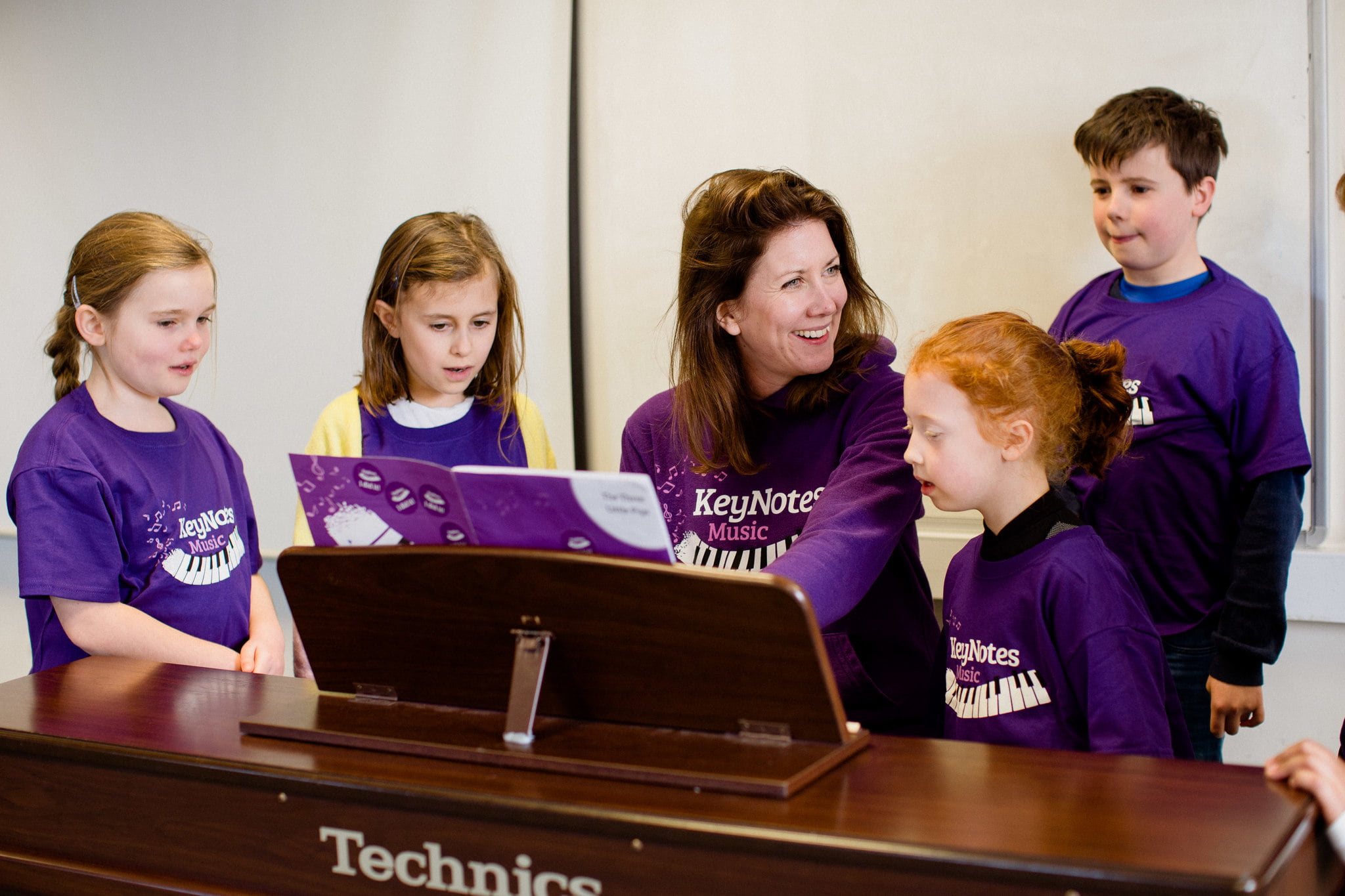
I only teach group classes, and parents come to me because of this. Not despite it.
2. DON’T – Expect Perfection
A change in mindset is often required when one moves from teaching individual lessons to teaching group piano classes. When you’re moving through pieces – whether they’re short beginner songs or an exam piece – they would work on that piece until it is mastered.
In order to strike a balance in groups, we need to remain on a piece of music for as long as it takes for students in the class to master their own version of it.
If we have the cyclical structures and the differentiation in place, that might mean a student learns a simpler version of the song, knowing that as their playing progresses, they’ll be able to move on to more difficult versions of that song or future songs – just like with the “Sunflower Dance” example above.
In other words, we shouldn’t require all of our students to master and play all of the pieces in the same way as each other.
Instead, we want our students to access pieces in a way which is appropriate for them and their commitment and/or ability. This shift in mindset can help to take the pressure off you as a teacher and can make the process of learning more child-centred and creative.
3. DON’T – Be Afraid to Use Headphones
Headphones + group piano = a bad rep.
Yes, we are learning collaboratively. Yes, we want to play together and make music together. But what if I were to tell you the occasional use of headphones helps you to achieve so much of what we have discussed above?
Headphones can help you manage individual progress, encourage students to develop independent learning skills and the ability and know-how for home practice, all while providing some quiet and calm time. (Listening to everyone else’s piano all of the time can lead to sensory overload for both the students and the teacher!)
If you have a plan for differentiation as you should, it becomes impossible to lead learners through their own challenge if everyone is playing out loud all the time.
4. DON’T – Run Free Trials
OK, this one is a little more business- than pedagogy-based. But it’s an important part of teaching new group piano classes.

You’ve probably had experience of the potential for time-wasting and admin headaches when it comes to free trials. But when you’re trying to build a group class, the management of trials is even more important.
I tend to run 3-week paid trials bookable through my website. Three lessons is enough time for students to settle into the class and for the parent to decide to sign up for auto-enrollment (which I find they always do!).
5. DON’T – Delay!
I can’t tell you the number of times I hear teachers saying they wish they had started teaching group piano classes earlier. They’re nervous to get started and so they hold off, despite their long waiting list of beginners. But once they get started, they never look back!
Have you thought about teaching your beginners in groups?
Have any of these dos or don’ts given you clarity on how to approach teaching your group piano classes? Let us know in the comments below.

Do you create your own curriculum or follow something like Paul Myatt or Piano Safari?
What’s a good curriculum for a group of 5 year olds?
We have our own curriculum inside vibrantmusicteaching.com called Mini Musicians. Melanie (who wrote the above article) runs KeyNotes which you can find linked in her bio at the top.
Can you suggest any other piano books that supply different levels of the same piece besides the holiday themed books you mentioned above?
I really like the Sunflower dance example. Where can I find more of these multi-level pieces?
Hi, Mitch! Piano Pronto has several multi-level pieces at this link: https://pianopronto.com/search/?q=multi%20level. I hope that helps!